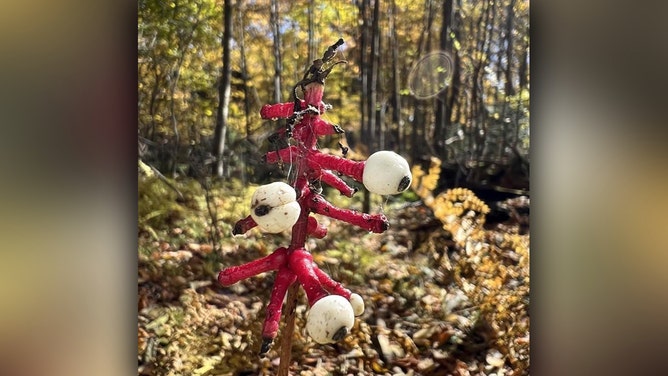Delirium-causing berries on this creepy-looking plant should never be eaten, experts warn
The plant blooms from April to June and is commonly found in deciduous forests with a moist understory that creates partial shade in the eastern half of the U.S.
Bug out: Plants that repel mosquitoes
Keeping mosquitoes away from your family can start with your landscaping. Here are some garden plants and pet and kid safety tips to keep the bloodsuckers at bay.
SHENANDOAH NATIONAL PARK, Va. – If there was ever a plant that conveyed the message, "Do not eat," it's this one.
National Park Service officials warn wildlife enthusiasts to avoid contact with the white baneberry or "doll’s-eyes" plant.
"The berries and the entire plant are considered poisonous to humans and can lead to vomiting, delirium, and stomach cramps," they said on social media with a photo of the attention-grabbing plant amid fall foliage at Shenandoah National Park in Virginia.
INVASIVE FRUIT FLY SPOTTED IN CALIFORNIA PROMPTS NORTHERN HEMISPHERE'S FIRST QUARANTINE FOR INSECT

A flowering white baneberry with a pinkish-red stalk and white berries with black dots is seen amid fall foliage at Shenandoah National Park.
(National Park Service)
The official name of this plant is Actaea pachypoda. The plant is known for its fruit, a 1-centimeter diameter white berry with a highly-distinctive black stigma scar.
The plant is commonly found in deciduous forests with a moist understory that creates partial shade in the eastern half of the U.S., according to officials in Oakland County, Michigan, where the conditions are easily found. The plant blooms from April to June.
"It’s hard to miss if you walk slowly, stop often and look about in healthy woodland landscapes," they said.
According to the NPS, various birds, which are unaffected by the toxins, eat the berries and help disperse the seeds.
The Lady Bird Johnson Wildflower Center in Texas notes that the plant's berries are only toxic if eaten in large quantities. Other symptoms include burning of the mouth and throat, salivation, severe stomach cramps, headache, diarrhea, dizziness and hallucinations.
